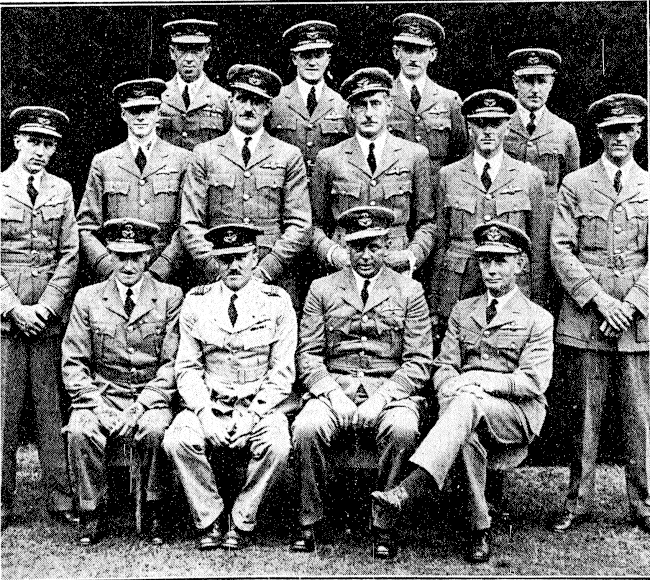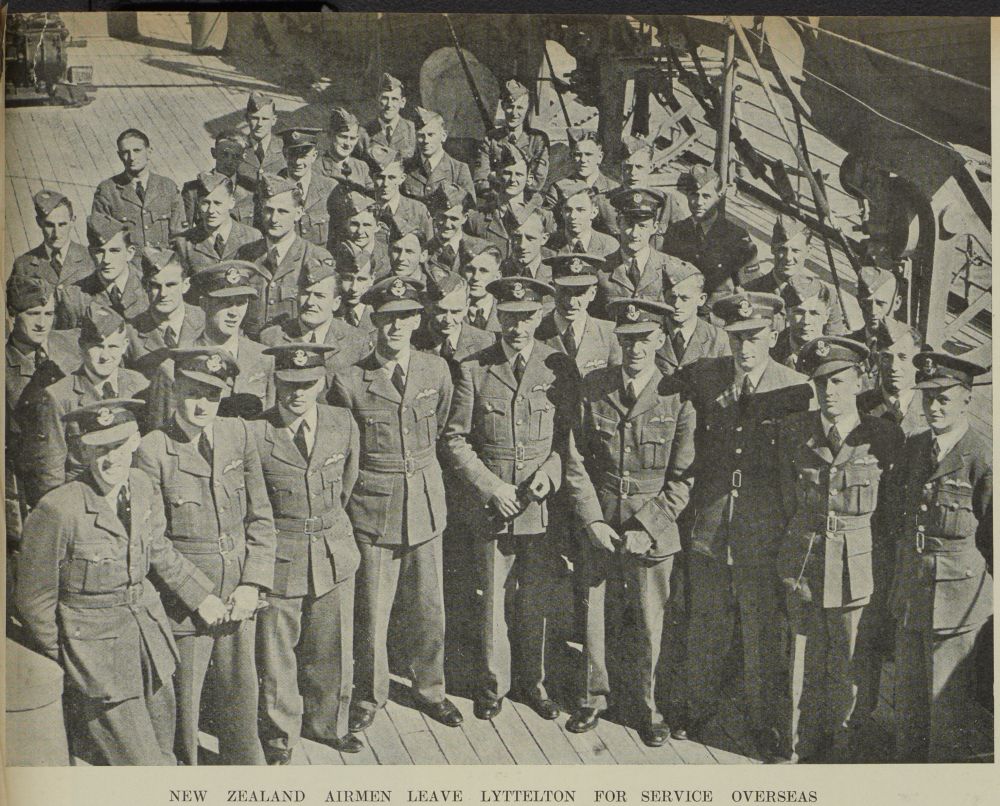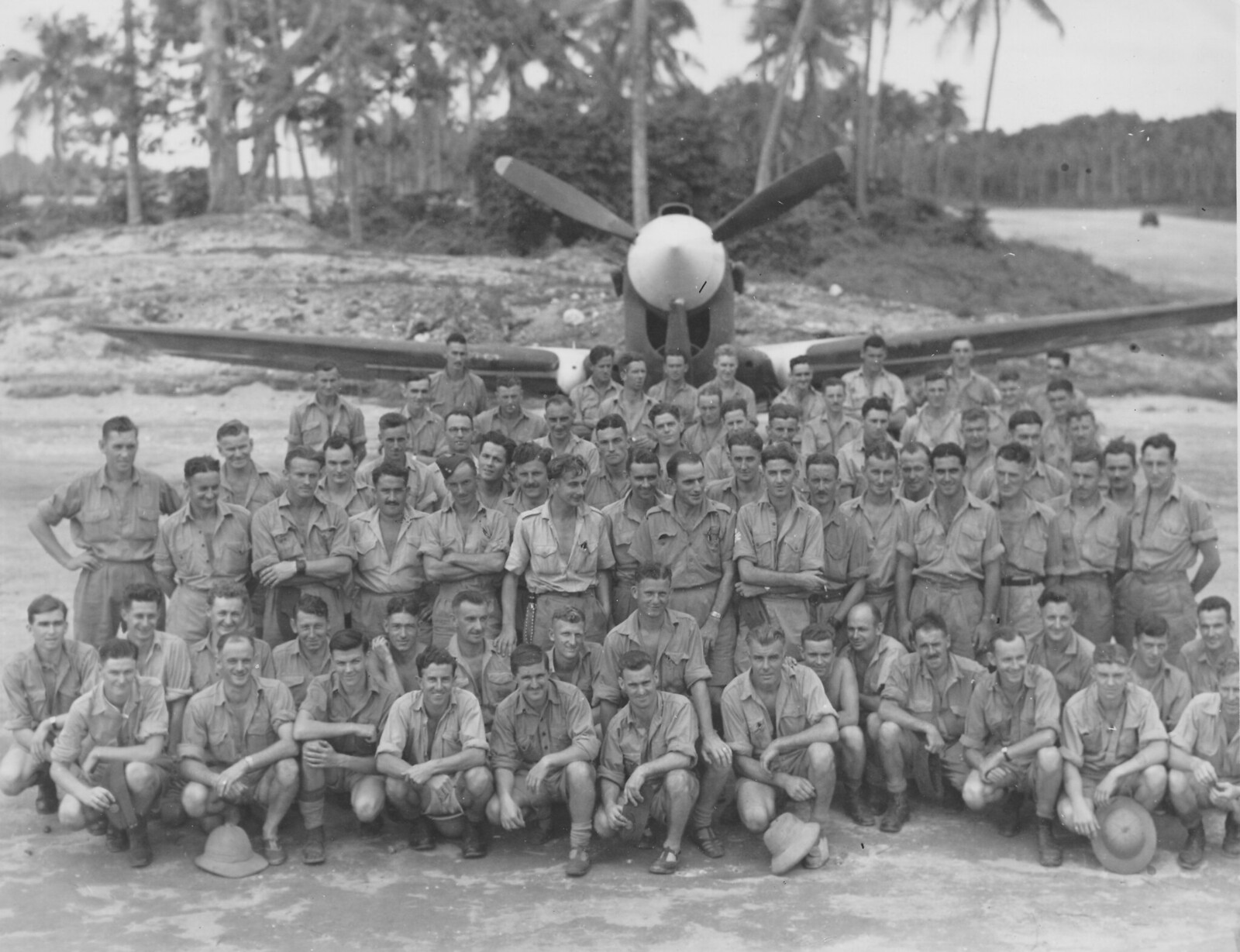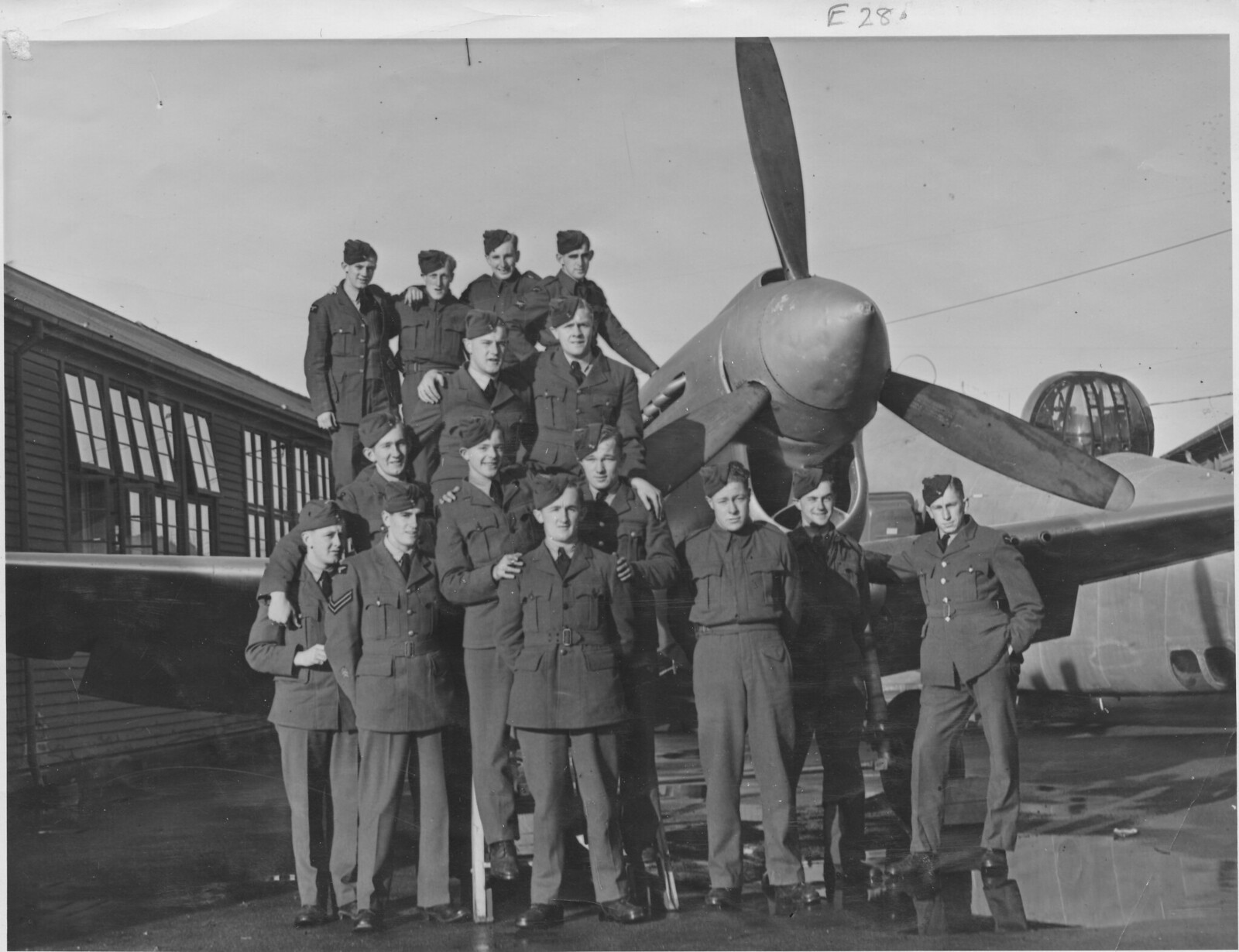|
|
Post by davidd on Jul 2, 2017 11:59:41 GMT 12
Dave H,
This photo would have to be Wigram's No. 7 Course, which commenced training at Wigram 14/6/39, graduated 20/11/39, and embarked (17 men, presume all those in the photo above) for the UK aboard TAMAROA on 5/12/39 at Auckland, bound for the Panama Canal and the UK to take up their short service commissions. Another 4 were retained in NZ on instructional duties, but much later two of these were also were shipped to the UK. MacFarlane, as explained below, returned to NZ in early 1943 for operational duty with RNZAF, but later returned to UK.
This course comprised P/O's J H Arkwright (retained), M E F Barnett*, E V Best, G R Brabyn (retained, but much later, 14/8/42, shipped to UK, rtd NZ x/6/43, visit may have been connected with a bomb sight he had developed), E C Cameron*, F H Denton, James Duigan*, D V Gilmour*, A G L Humphreys, L D Loasby*, D H McArthur*, M H MacFarlane (rtd to NZ 30/1/43, served with 1 Sqdn on their first tour, on PV-1s at Guadalcanal, returned to UK 3/7/44), R M McKay (retained in NZ, undertake two "visits" to UK, 8/4/42 - x/1/43, embarked on second visit 3/8/44 for ECFS course, then became probably New Zealand's first jet pilot with 616 Sqdn ([Meteors]), J E S Morton, P G H Newton (retained), H A Outram, G N Parker*,C A Pownall, D M Rolph-Smith*, R C E Scott, J S Shorthouse. So total of 17 shipped to UK, of whom 8 (marked with asterisk, above) died on operations or in accidents.
This course contributed a surprising number of second pilots (later captains) to 75 (NZ) Sqdn, namely Best, Cameron, Denton, Gilmour, Humphreys, McArthur, MacFarlane, Morton, Parker and Pownall, although only Cameron was lost on operations with this squadron.
Having a suspicion that Wigram Course No. 7 had already featured on this thread, I went back a few pages and note that Errol Martyn's post dated 4th Sept 2016 (my birthday!) includes a complete list of the members of this course. So we appear to be duplicating ourselves (although the image Errol was commenting on may have been an entirely different photograph, perhaps the one taken at beginning, or end of this course.)
David D
|
|
janfd
Leading Aircraftman

Posts: 9 
|
Post by janfd on Jul 3, 2017 15:43:02 GMT 12
First of all to Errol to thank you so much for your wonderful books - what a legacy and what a wonderful source of information. I have been reading book no. 297 which you have signed at the Manchester Street Library in Christchurch. Now a puzzle which I trust somebody more experienced in these matters can solve. In one of the Taieri that I posted recently (page 11 here) there is Jack King standing in the back row. From all the information I have found about him from above I am somewhat confused. It seems that he was already qualified and had just commenced instructing on Tiger Moths. Why is he wearing the white piece in his cap which I understand signifies 'under instruction'? Was it a joke perhaps? All the photos I have of him show him with a broad smile and obviously the others enjoyed his company enormously. Below are some photos all containing Jack with others. One of the photos show him with others standing in front of an Oxford. Going by my cousin's logbook here it seems to me that he didn't fly an Oxford until arriving at Wigram. However Jack King is definitely in that photo so ... were there Oxfords at Taieri (with any time not neccessarily put in logbook)? Please can somebody explain? goo.gl/photos/HfSghfGrMBRdpAVV7goo.gl/photos/qa7xWwoczZUC24Ci7goo.gl/photos/SM2pHokqhBHbHaQg7 |
|
janfd
Leading Aircraftman

Posts: 9 
|
Post by janfd on Jul 3, 2017 15:53:21 GMT 12
|
|
|
|
Post by Dave Homewood on Jul 3, 2017 16:42:27 GMT 12
I would doubt that an instructor would wear the white flash as a joke. Not only would that be in breach of clothing regulations, aircrew could not wait to get tot that point where they didn't have to wear the flash. It was a privilege to remove the flash and no longer be a "Danga", the slang word short for Dangaroo. Rhyming with kangaroo/s it was a play on the word dangerous. So I'd be surprised if any instructor would deliberately put the whit flash back into his cap.Maybe he is wearing someone else's hat in error though, but that'd also be a surprise - in the RNZAF you always knew where your hat was.
I am not sure what is going on with that photo that is not attached correctly. Those other group photos in the link are great shows, all so casual and genuine.
|
|
janfd
Leading Aircraftman

Posts: 9 
|
Post by janfd on Jul 3, 2017 16:50:45 GMT 12
Thanks Dave NZ 413167 Jack King's story is so interesting with him being on the Rangitane when it was sunk by the Germans - the men all dropped off at Emirau Island. On returning to NZ he continued training and then an Instructor at 1 EFTS. Something is just not right. I will try again to place the third photo.  |
|
|
|
Post by htbrst on Jul 3, 2017 17:34:10 GMT 12
Thanks Dave NZ 413167 Jack King's story is so interesting with him being on the Rangitane when it was sunk by the Germans - the men all dropped off at Emirau Island. On returning to NZ he continued training and then an Instructor at 1 EFTS. Something is just not right. None of the RNZAF members on the ship were released - instead being taken back to Germany. Interestingly, if you were in the Fleet Air Arm they were largely caught and released. Jack King is listed as Fleet Air Arm on the Rangatane passenger list here: www.rangitane.co.uk/app/download/10538877/RangitaneList.pdf Is that a typo or did he move back to the RNZAF after the sinking? I remember my grandmother telling me how disappointing the family were when it was announced that all of the passengers had been released only to find out soon after that this was not the case after all. |
|
|
|
Post by Dave Homewood on Jul 3, 2017 19:30:58 GMT 12
No that is not right Will, some of them were put onto Emirau after they signed contracts stating that they'd not take up a combat role against the Axis forces. One of them was a Kofoed who also became an instructor.
Many of the Fleet Air Arm pilots were plucked (poached) directly from the RNZAF, usually men who'd completed a certain amount of training but were suddenly stuck in limbo as their next course would not start for a while (as there were too many men flowing through for the system to cope, the main reason the Aerodrome Defence Units were formed, as holding patterns). So RN officers would visit these guys and say "You can stay here doing nothing with the RNZAF or come with us to England and be flying much sooner." So many volunteered, and would simply head to Auckland to be sworn into the RNZNVR, and then on the first ship for England (where they'd soon realise they were duped because they have a lot more courses to do than the RNZAF ever would have put them through.... basic Navy training, then officer training, then flying training, then carrier training, etc, at least 18 months of training.)
So Jack will have been FAA if he'd joined them in this way, but on getting back to NZ he'd not have been wanted by the FAA after signing the pact, and would have reverted back to the RNZAF as an instructor I guess. After that incident the FAA members never travelled in uniform on the ship from NZ to UK again for around two years, they pretended to be civvies so they'd not face having to sign the pact or choose life as a POW if they were captured.
|
|
|
|
Post by errolmartyn on Jul 3, 2017 20:36:23 GMT 12
After that incident the FAA members never travelled in uniform on the ship from NZ to UK again for around two years, they pretended to be civvies so they'd not face having to sign the pact or choose life as a POW if they were captured. Even before and during the Rangitane incident FAA candidates did not travel in uniform. Had they done so they would have all become PoW, just like the RNZAF chaps, all of whom were uniform. Errol |
|
janfd
Leading Aircraftman

Posts: 9 
|
Post by janfd on Jul 3, 2017 21:52:15 GMT 12
So much to learn from you guys!
From Errol's books it seems that Jack King enlisted for RNFAA as Aircrew (apparently he didn't even have a service number) so that would be the reason he was left on Emirau I presume. Discharged May 41 then to RNZAF Levin Airman Pilot end of May moving to Whenuapai - Pilots Badge and Comm followed. Harewood, Rongatai, CFS and finally Taieri as FI in March 1942. Sadly he was killed with an Aircraftman when a Tiger Moth spiralled out of control in January 1943.
I just cannot work out how these photographs can be of the same man but they must be. I have not found another Jack King. My aunt has written on the back of the Oxford photo '3 gone' and I know that the man third from right is Leonard Lancaster who survived. The other two are Frank Scott (421105) and Jack Turner (421115). Forgive my ignorance but did a newly-trained instructor have to take part in a course first?
Thank you so much Errol - without your books I would know very little of this.
|
|
|
|
Post by Dave Homewood on Jul 3, 2017 22:21:18 GMT 12
So much to learn from you guys! From Errol's books it seems that Jack King enlisted for RNFAA as Aircrew (apparently he didn't even have a service number) All those who joined the RNZNVR were given a four digit number upon joining, at which time they were untrained cadets, but those who were commissioned as officers dropped the number, as Royal Navy officers did not have service numbers. I have never worked that one out, how on earth did they keep track of who was who with thousands of officers all over the world and some of them surely having the same names, the Smiths, Browns and Taylors, etc. So he would have had an enlistment number. Most FAA officers I have met could not remember the number as they had them for a very short period only, whereas RNZAF and Army personnel never forget their service numbers. Flying Instructor pilots did the full flying training course before they were selected as instructors. They usually chose the pilots from each course who had the all round top marks and right attitude to be retained to become instructors. They then had to go to the Central Flying School of the RNZAF to be trained in becoming an instructor - i.e. to learn how to teach others. After that course which was fairly intensive, and during which they flew both single engined trainers and multi engined trainers. plus from the mid-war period onwards they flew fighter aircraft too, they would be posted on to a flying school to take up their post as an instructor. |
|
|
|
Post by Dave Homewood on Jul 3, 2017 22:23:20 GMT 12
Even before and during the Rangitane incident FAA candidates did not travel in uniform. Had they done so they would have all become PoW, just like the RNZAF chaps, all of whom were uniform. Errol Interestingly that is not what several Fleet Air Arm officers told me independently, they were all led to believe some of their chaps were made POW because they were in uniform and the order to travel in civvies came as a result of the Rangitane incident. However I have been Googlign about and found this from the PRESS, dated 15 JANUARY 1941: Not Ill-treated
“Those who say that we were ill-treated should be severely dealt with,” said Mr Cleland Millar, who was one of the passengers on board the Rangitane, in a brief interview during a short stay at Dunedin on his return home to Invercargill. “You can imagine,” he added, “what would happen on a’ ship that had to carry 700 more than her ordinary complement. There was some overcrowding, but as far as brutal treatment is concerned, that is a lot of nonsense.” Mr Millar was going Home to join' the Fleet Air Arm. He attributed his release on Emirau Island partly to the fact that he was not in uniform. Also he had.to sign a paper giving an assurance that he would not take up arms again. |
|
|
|
Post by errolmartyn on Jul 4, 2017 0:30:41 GMT 12
Those who signed up in NZ (effectively through the RN) for the FAA prior to formation of the RNZN were not alloted an official number until they arrived in England, whereupon they were numbered in a series prefixed FX. No number once they were commissioned, however. I think you will find that all ratings enlisted in the RNZN from when it was created in October 1941 or shortly thereafter were allotted four-digit numbers, including those destined for the UK and the FAA. Again, if then commissioned (by then usually in the RNZNVR) the no longer had a number. Errol |
|
|
|
Post by Dave Homewood on Jul 10, 2017 14:47:27 GMT 12
Does anyone recognise the faces here from this 1935 shot? It was published in the NEW ZEALAND HERALD, 26 FEBRUARY 1935   We have, as mentioned, F/Lt Sidney Wallingford in the front row, second from left. Standing directly behind him is, I believe, G.M. "Tony Firth" who was definitely on this course - I am not sure if his lookalike brother Ted was also on the course but there's only one Firth in the photo. |
|
|
|
Post by Dave Homewood on Sept 6, 2017 19:04:01 GMT 12
 From the Auckland Weekly News dated 10 April 1940 Sir George Grey Special Collections, Auckland Libraries, AWNS-19400410-49-1 |
|
|
|
Post by camtech on Sept 7, 2017 12:50:00 GMT 12
|
|
|
|
Post by camtech on Sept 7, 2017 12:56:51 GMT 12
To add some detail, the Kittyhawk was NZ3271, Inst 96, which later went to Christchurch Boys High School, then to Rukuhia, where it was broken up.
The Hudson was NZ2080, Inst 115, later sold to McIntosh.
|
|
|
|
Post by Dave Homewood on Sept 8, 2017 0:04:07 GMT 12
Great to see. That Hudson must be minus outer wings and tail.
Just a note, Leo White was a member of the RNZAF from 1942, and did much of the photography for Contact magazine. So any photos he took during the 1942-45 period are Air Force Museum of New Zealand copyright, rather than Whites Aviation.
|
|
|
|
Post by camtech on Sept 8, 2017 10:26:41 GMT 12
Aware of that, Dave.
I tend to work off what is noted on the back of the photos - many I know that were taken by Leo have RNZAF details that I have notated on the back but a number, which are obviously taken during his Air Force days, have Whites Aviation details.
|
|
|
|
Post by errolmartyn on Sept 8, 2017 13:05:38 GMT 12
Great to see. That Hudson must be minus outer wings and tail. Just a note, Leo White was a member of the RNZAF from 1942, and did much of the photography for Contact magazine. So any photos he took during the 1942-45 period are Air Force Museum of New Zealand copyright, rather than Whites Aviation. According to the New Zealand Gazette, Leo was appointed to a commission, as a pilot officer, in the Administrative & Special Duties Branch of the RNZAF on 15 Aug 42. He was posted to the Reserve (now as a flying officer) on 22 Jan 45. Errol |
|
|
|
Post by camtech on Sept 8, 2017 13:16:06 GMT 12
Thanks for that detail, Errol - will assist in identifying some of his work. I am fairly sure, though, that Leo was heavily involved with the Air Force prior to that date, but not formally on the books.
|
|













